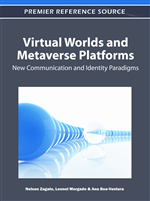 Another great event from Virtual Ability Island in Second Life on the way in coming days:
Another great event from Virtual Ability Island in Second Life on the way in coming days:
July 16, 2011 – IDRAC2011
International Disability Rights Affirmation Conference- July 23/24, 2011
Virtual World Conference about Real World Rights
Virtual Ability, Inc. announces the International Disability Rights Affirmation Conference (IDRAC2011) to be held Saturday and Sunday, July 23/24, in Second Life®.
In 2006, the United Nations held a Convention on the Rights of Persons with Disabilities. The text of the Convention was adopted by the UN General Assembly, and now has over 100 signatory states, including the US and the European Union.
Legislation to protect the rights of persons with disabilities is becoming common around the world. However, the June 9 World Health Organization study, the World Report on Disability, found significant barriers to equal access for persons with disabilities still exist.
This international conference will begin to explore legal protections around the world for persons with disabilities. Featured panels of persons from around the world will discuss local legislation that supports the rights of persons with disabilities. Panelists come from Australia, Belgium, Costa Rica, Italy, the Netherlands, Spain, and the UK.
Featured presenters include Scott Gill, Simon Walsh, Sister Abeyante, and Roberta Walker Kilkenny.
Gill is Executive Director of Access 2 independence, a Center for Independent Living in Iowa, US; he will talk about the independence movement. Walsh is head of his own consulting firm in the UK; he will compare the US ADA legislation with the UK’s DDA. Abeyante is a Salvatorian Sister; she will discuss advocacy for disability (civil and human) rights. Kilkenny is a college instructor; she will present about the significance of the UN Convention.
Presentations by the National Service Inclusion Project and the Job Accommodation Network will highlight disability services available in the US. Other sessions will feature peer support, comedy, and dance, both as part of the affirmation celebration.
Presentations will take place in Sojourner Auditorium on Virtual Ability Island within Second Life®: http://maps.secondlife.com/secondlife/Virtual%20Ability/54/170/23. The full schedule of confirmed presenters is posted inworld, and at http://virtualability.org/IDRAC2011.aspx.
Alice Krueger, president of Virtual Ability, Inc., stated: “It is a great pleasure to host so many wonderful speakers. Our audience will gain information about the extent of the issues facing people with disabilities, and the potentials for solutions to barriers.”
About Virtual Ability, Inc.
Virtual Ability, Inc. is a 501(c)(3) non-profit corporation based in Denver, Colorado, dedicated to enabling people with a wide range of disabilities by providing a supporting environment for them to enter and thrive in on-line virtual worlds like Second Life®.
For more information on Virtual Ability, Inc., including the benefits of virtual reality for people with disabilities, please see www.VirtualAbility.org.
For further information, contact:
Alice Krueger, President
Virtual Ability Inc.
Office: 303/400-3306
akrueger@VirtualAbility.org





Recent Comments